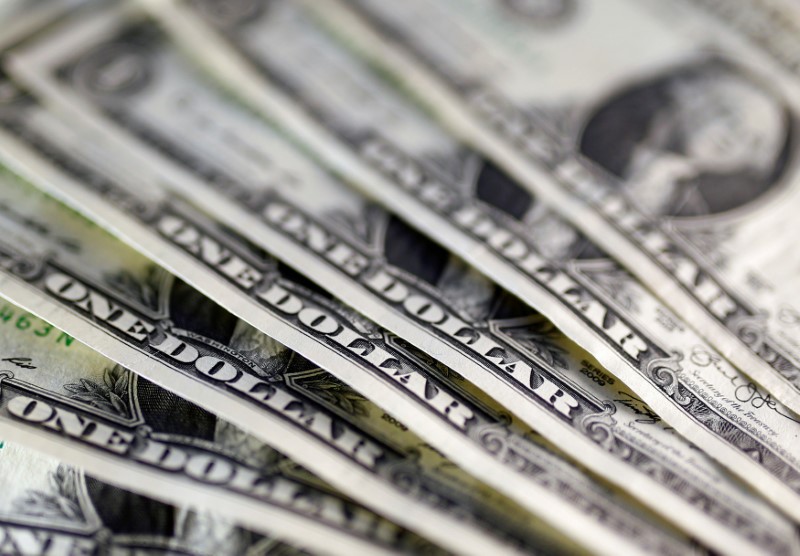
By Dion Rabouin
NEW YORK (Reuters) – The U.S. dollar rose on Thursday, rebounding after a slide that investors considered overdone following remarks by President Donald Trump that the currency was getting too strong and he would prefer the Federal Reserve to keep interest rates low.
The greenback and U.S. Treasury yields took a heavy hit after Trump’s comments to the Wall Street Journal, in which he said the strength of the dollar would hurt the economy.
But after losing 0.6 percent on Wednesday – its biggest one-day fall in more than three weeks – the dollar recovered on Thursday against a basket of major currencies <=USD> that tracks its value, rising 0.3 percent.
“Clearly, I think it was oversold yesterday,” said Peter Ng, senior currency trader at Silicon Valley Bank in Santa Clara, California. “The market was very sensitive to headlines given how nervous it has become due to geopolitical risk.”
Trading was also thinner than usual because of the impending Good Friday holiday in the U.S. and Europe this week, Ng said.
Having hit a five-month low of 108.73 yen in early Asian trading, the dollar steadied at 109.20 yen. <JPY=>
“Yes, it was negative what (Trump) said…but it’s not a big surprise – it wasn’t a U-turn in his rhetoric on the exchange rate so far,” said Commerzbank currency strategist Thu Lan Nguyen in Frankfurt.
“The question is: is he able to influence monetary policy in order to get a weaker dollar? That is still an open question.”
Trump’s remarks went against a long-standing practice of both U.S. Democratic and Republican administrations of refraining from commenting on policy set by the independent Federal Reserve. It is also unusual for a president to talk about the value of the dollar, a subject usually left to the U.S. Treasury secretary.
The dollar has shed 1.7 percent against the yen so far this week, its fourth week lower against the safe-haven Japanese currency in five, as a rise in tensions in Asia and Europe prompted yen buying.
Investors are concerned about the upcoming French presidential election as well as possible U.S. military action against Syria and North Korea, and an escalation of tensions with Russia.
The euro fell 0.5 percent to $1.0619 <EUR=> after touching a one-week high in overnight trading.
The dollar was little changed against China’s offshore yuan <CNH=D3>, after falling to a six-day low on Wednesday. It had risen to a one-month high at the start of the week.
(Additional reporting by Shinichi Saoshiro in Tokyo; Editing by Bernadette Baum)








